One of my interests is “adaptive re-use of space” — the Palacio Alverca is an exact case study.
Palacio Alverca is a remarkable old landmark building that had, like so many other buildings in the country, become run down due to the sagging economy. With Lisbon being in the midst of a resurgence, this building has been restored and brought back to life with a new purpose.
Originally built in 1717, then redesigned in 1917, the structure had been a high school and furniture warehouse before becoming an elegant casino. Now, since a recent refurbishment, it has been given a new purpose, with a trendy restaurant, an elegant dance hall, and a number of design shops attracting a young, hip following. Rather than demolish a wonderful landmark building, it was saved for a new generation with a fresh purpose.
Appropriately, Palacio Alverca is a classified landmark heritage building, listed with the Institute of Management of architectural and Arhcaelogical Buildings.
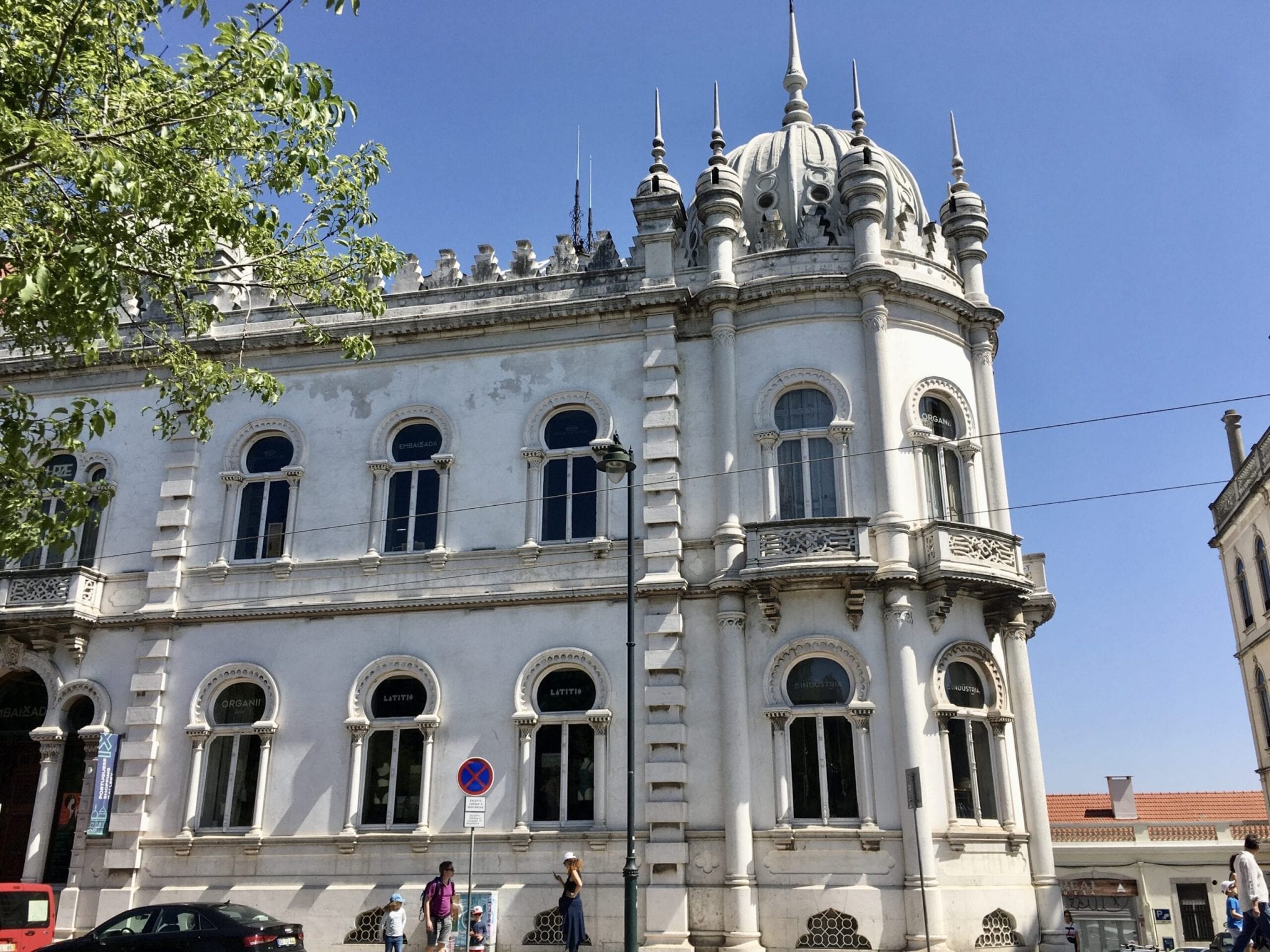
The Palacio Alverca is in the heart of the Baixa tourist area, with trendy shops and traffic rushing by. The neighborhood has beautiful plazas wide avenues and mostly formal neo-Classical architecture dating from the end of the 18th Century, when it was rebuilt after the earthquake in Lisbon in 1755, supposedly to resemble Paris.
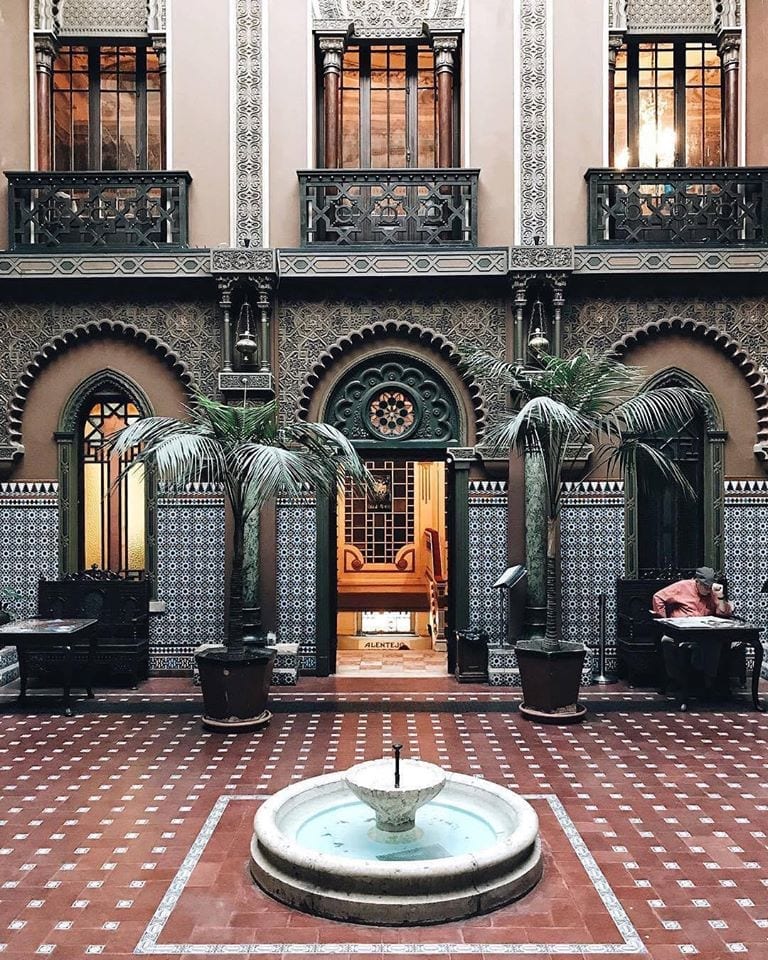
A Moroccan Palace in the middle of Lisbon… what was a Moroccan Palace doing among the neo-Classical buildings?
The Alverca Palace has an interesting provenance. The original building was started in 1717 where once upon a time there had been pasture and pig farms. Although Moroccan in style, it did not resemble the impressive ‘Palacio Alverca’ as it appears today.
But two centuries later, the building underwent a major ‘revivalist’ redesign, meaning it ‘invoked the use of visual styles that consciously echoed the style of a previous architectural era’. A leading architect of the time, Antoni Rodrigues da Silva Junior was in charge of the redesign, and with a team of the best artisans, craftspeople, and artists, he managed to complete it in record time. When finished in 1919, the new Palacio Alverca included part neo-Gothic, neo-Arab, neo-Renaissance, neo-rococo, and Art Nouveau and Baroque elements. This is quite a cocktail but it seems to work: each room is true unto itself and not mixed up.
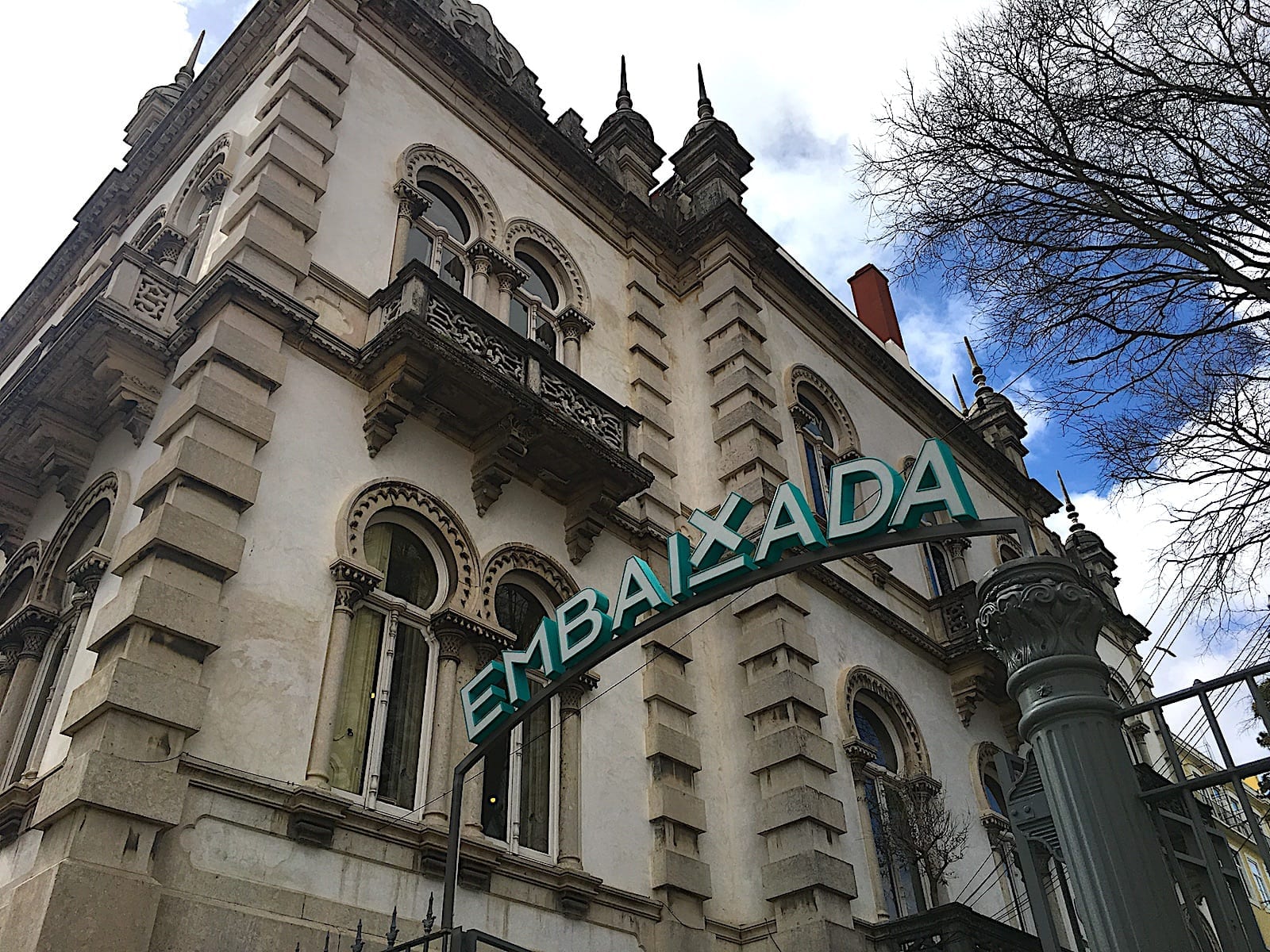
What I was about to find out when I got to the Palace was that in 2013, the Alverca Palace underwent another restoration, morphing it into the Embaixada: a concept store, with smaller pop-up stores within showcasing the latest in Portuguese fashion, interior design, accessories, jewelry and beauty products. The exterior of the building remained the same, as did the main interior rooms, but some adjustments were made to create showroom space for the pop-up stores that would be a magnet to attract millennials.
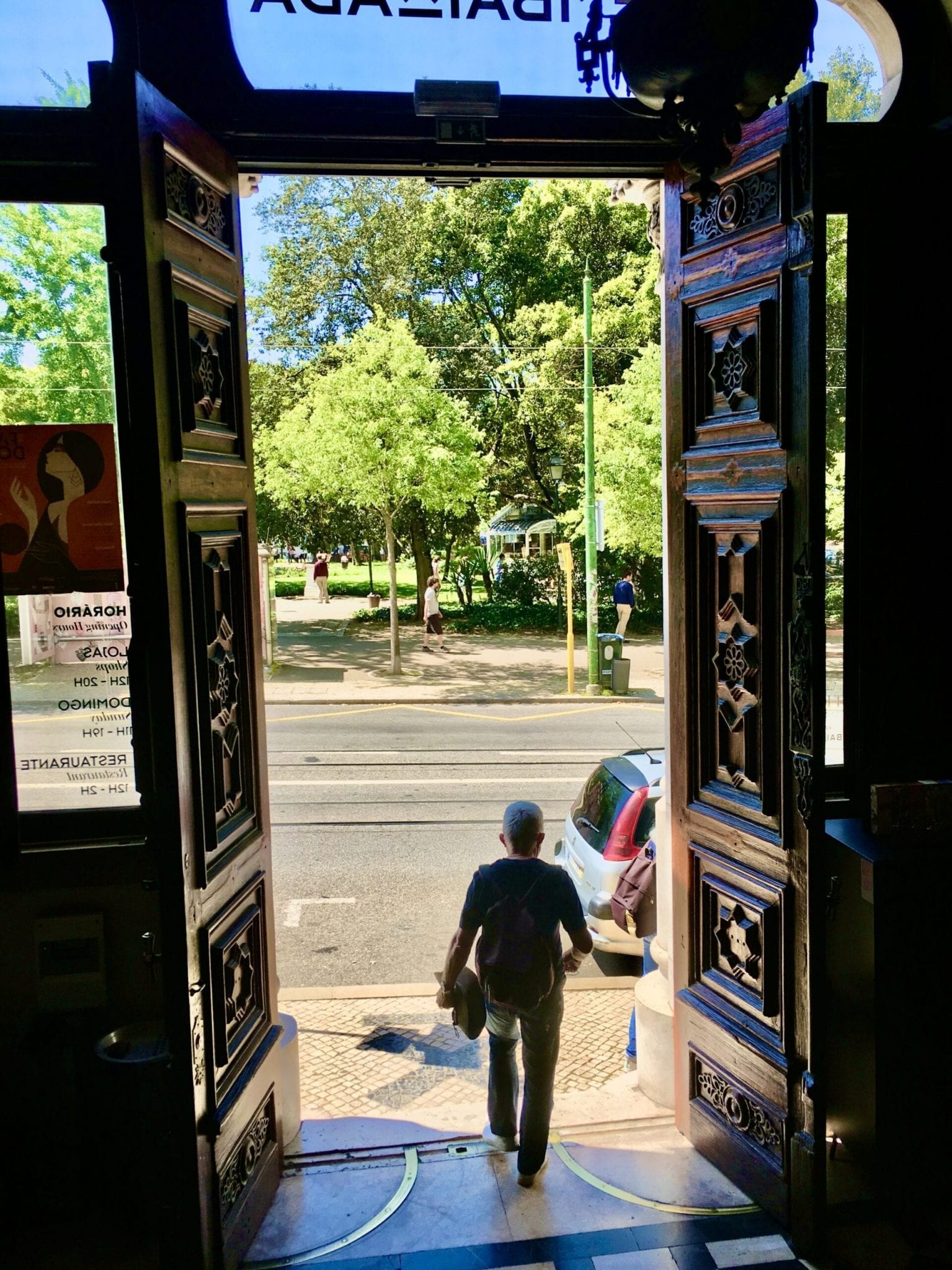
Finding the entrance on Rua das Portas de Santo Antao, I entered through enormously high, hand-painted, hand-carved doors into an authentic Moorish style riad. The decorative style was Moroccan and I could have been in Marakesh if I believed the decorations. Then, a few steps forward, the building takes on European elegance and style. It is impossible to explain everything that was challenging the eye in so small a space. From the outside, it was an authentic Moroccan Palace: but the interior had rooms featuring many styles. Every detail was exquisite whichever style was being represented at that point.
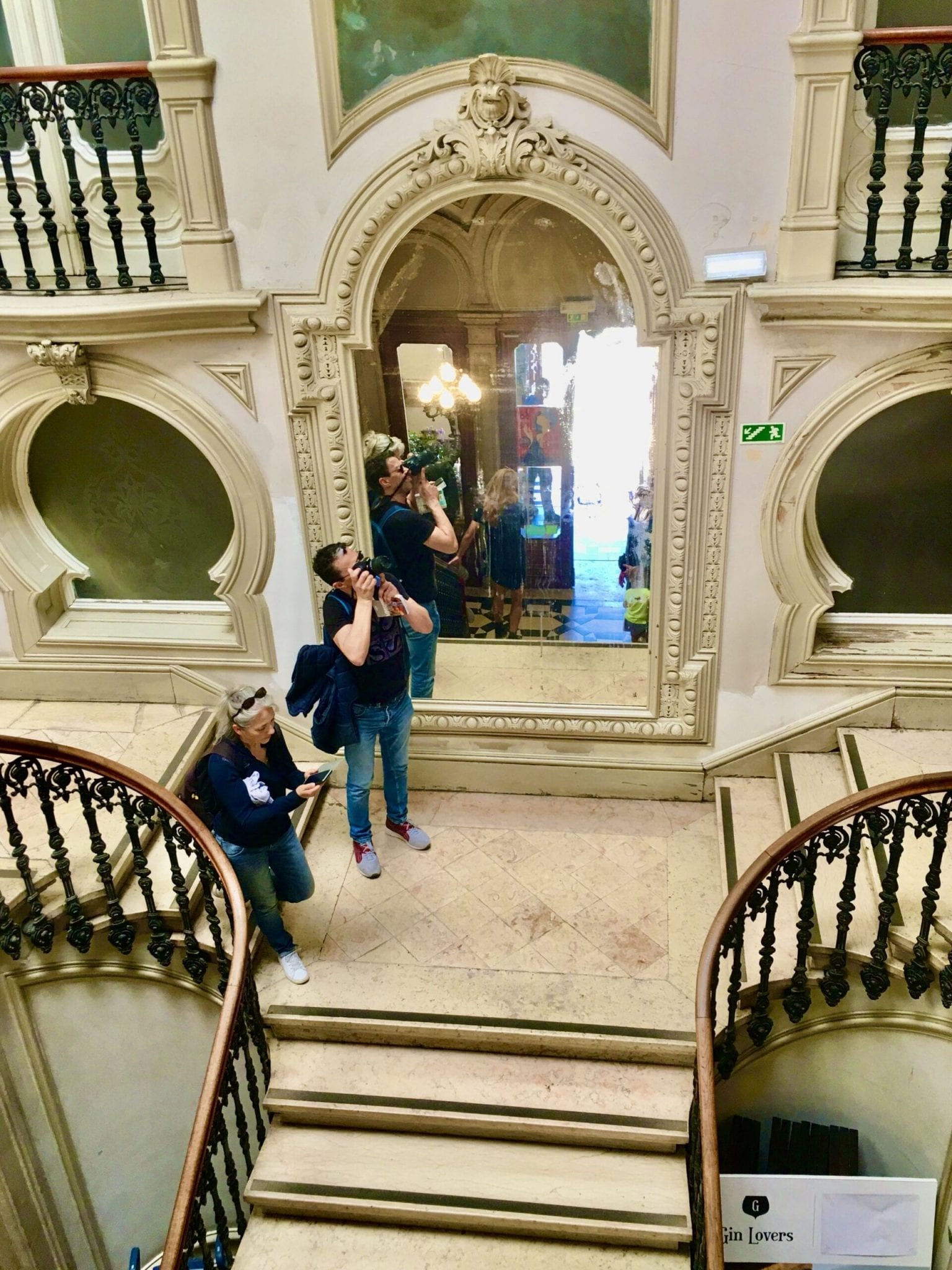
The entrance vestibule is triple-volume height and one can imagine elegant ladies and gentlemen wearing stylish evening gear as they enter up the sweep of the wide staircase. Looking at the person on the staircase, one can get a sense of the proportion.

A bronze statue stands guard on either side, carrying a torchiere with five lights creating extra drama. The two statues at the foot of the stairs ae matched again, upstairs.
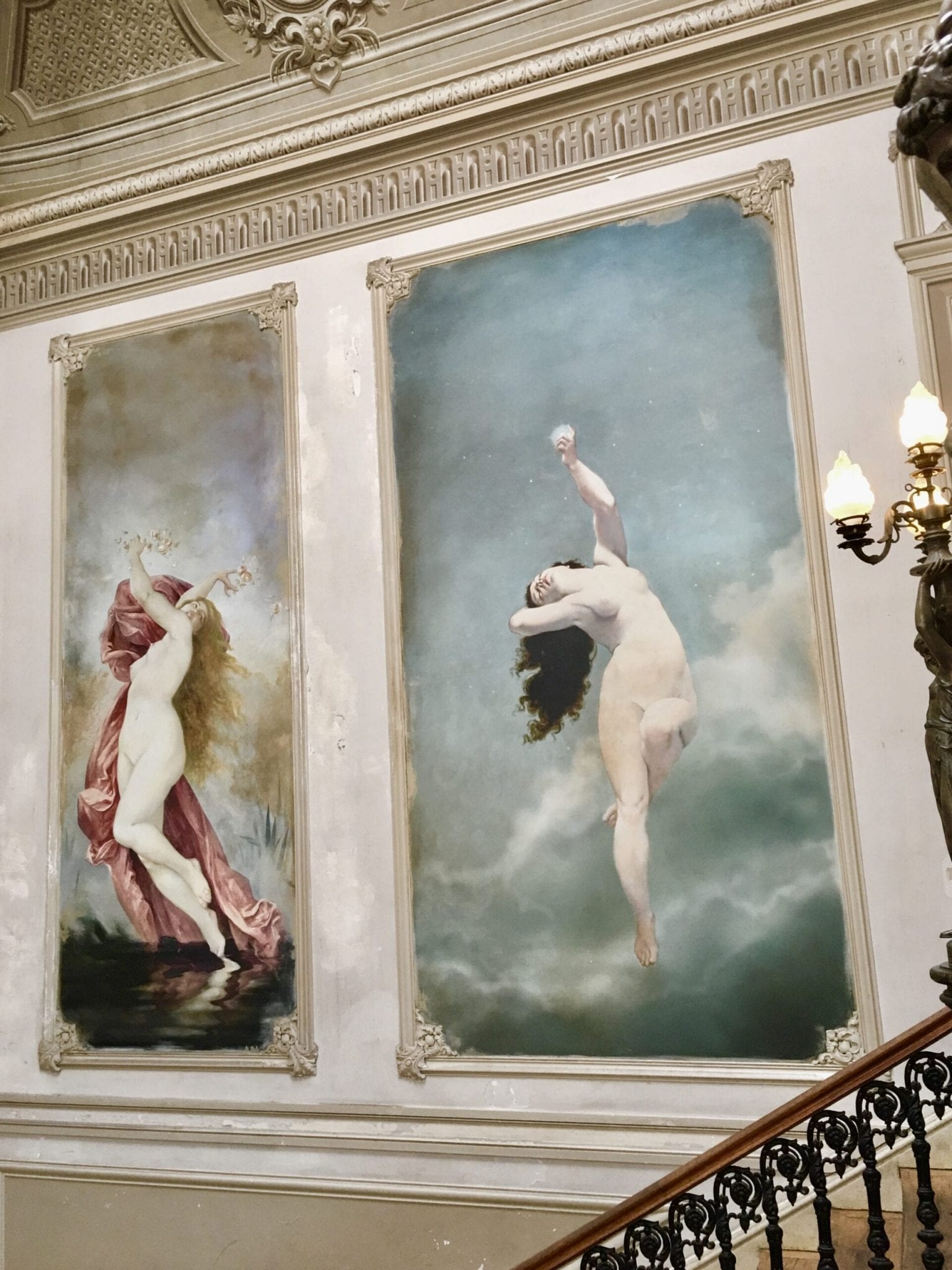
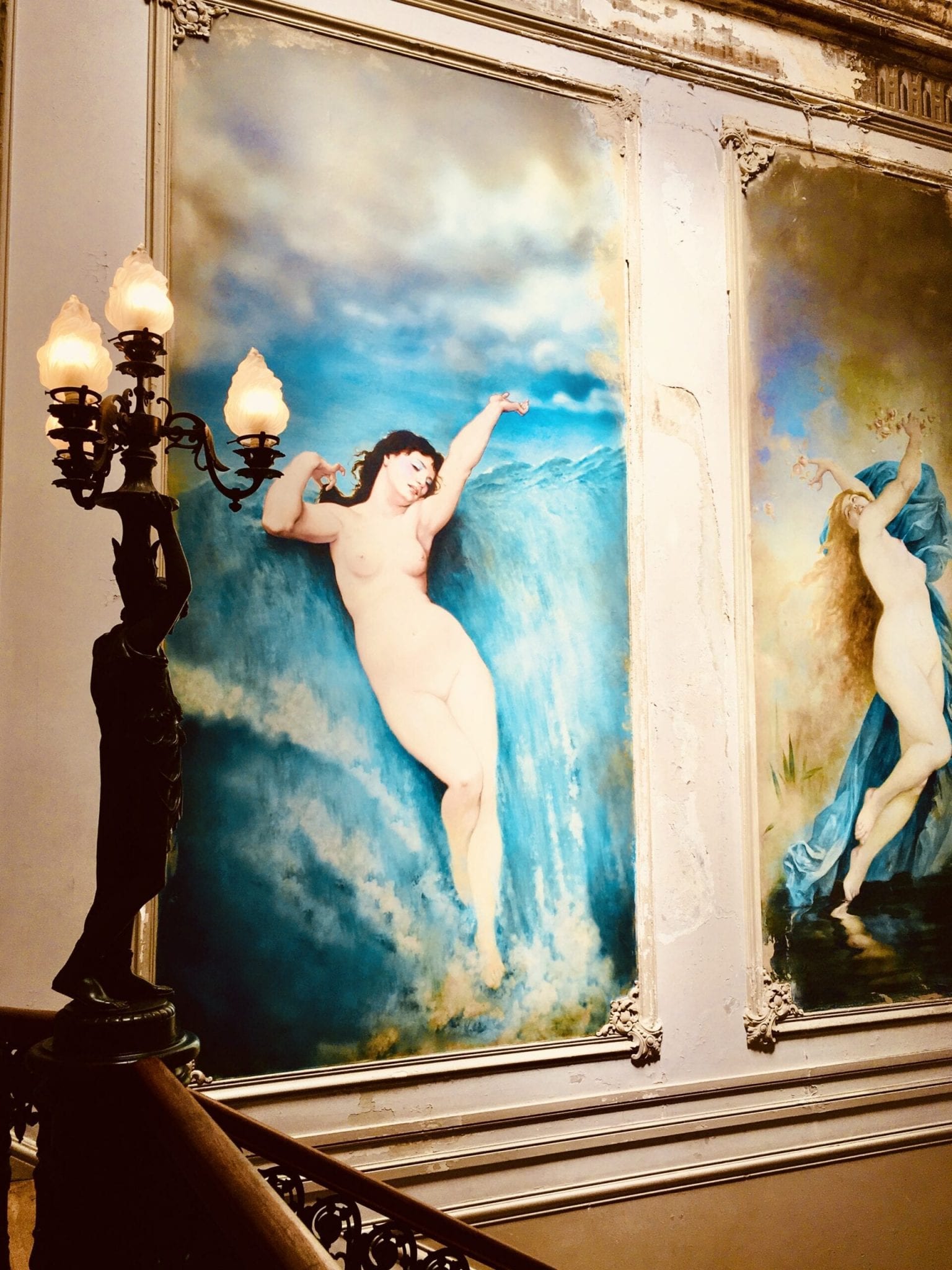
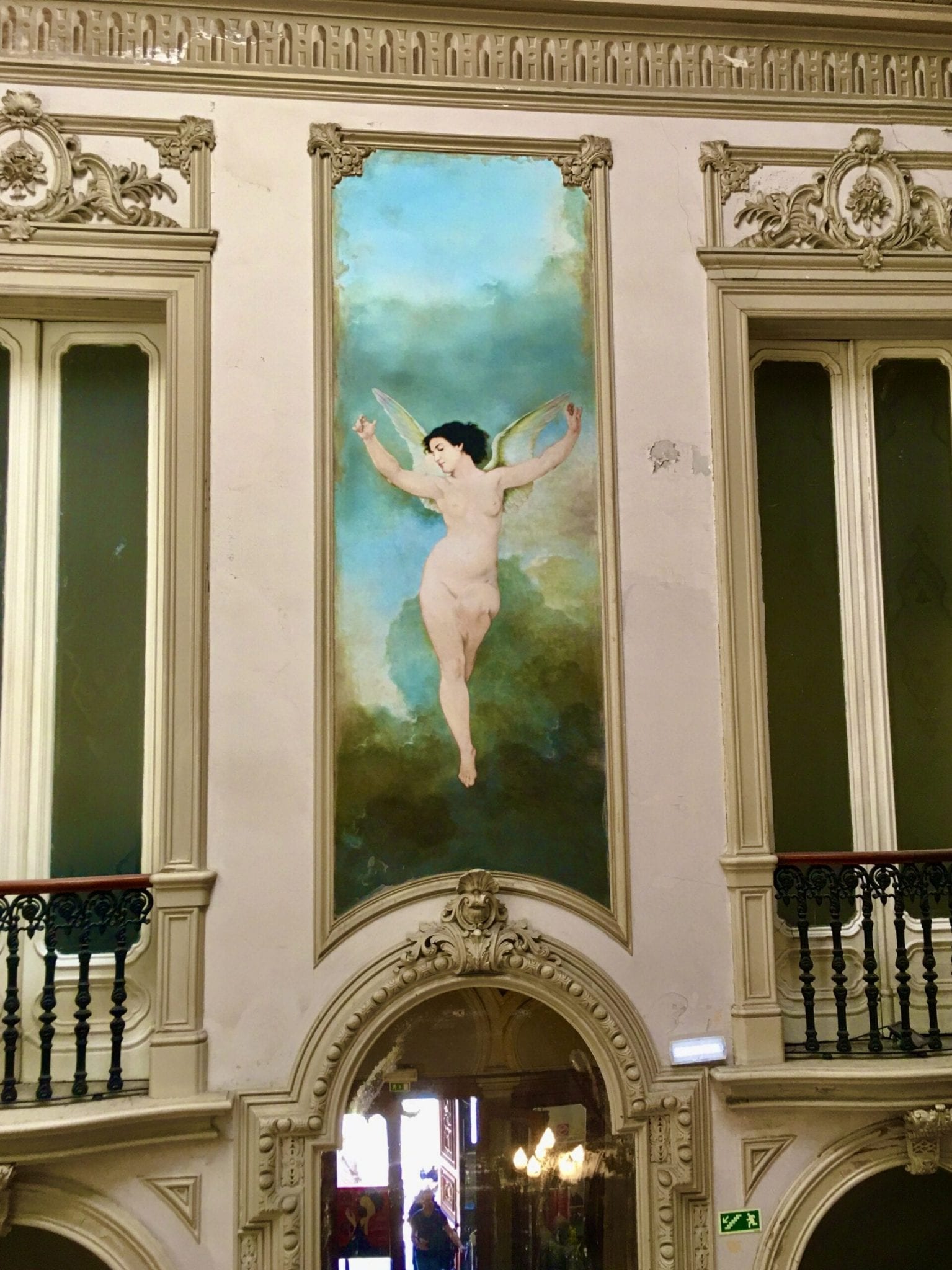
Huge paintings of semi-nude, nubile damsels with milky white complexions are featured in the paintings, prancing around in erotic poses, beckoning with a ‘come hither’ expression, Their style, neo-Renaissance, is reminiscent of wall art in European palaces and they were featured again and again throughout the Palace.
I wondered if this was a brothel at one time, but apparently not. It had been The Majestic Club, a casino, one of the first casinos to open in Lisbon and which went on to become a major attraction. It was very grand — and not everyone was admitted. Members were from the top tier of Lisbon society and attendees would dress up for the occasion (more than the damsels) as much to be elegant in fashions of the day as to impress their friends.
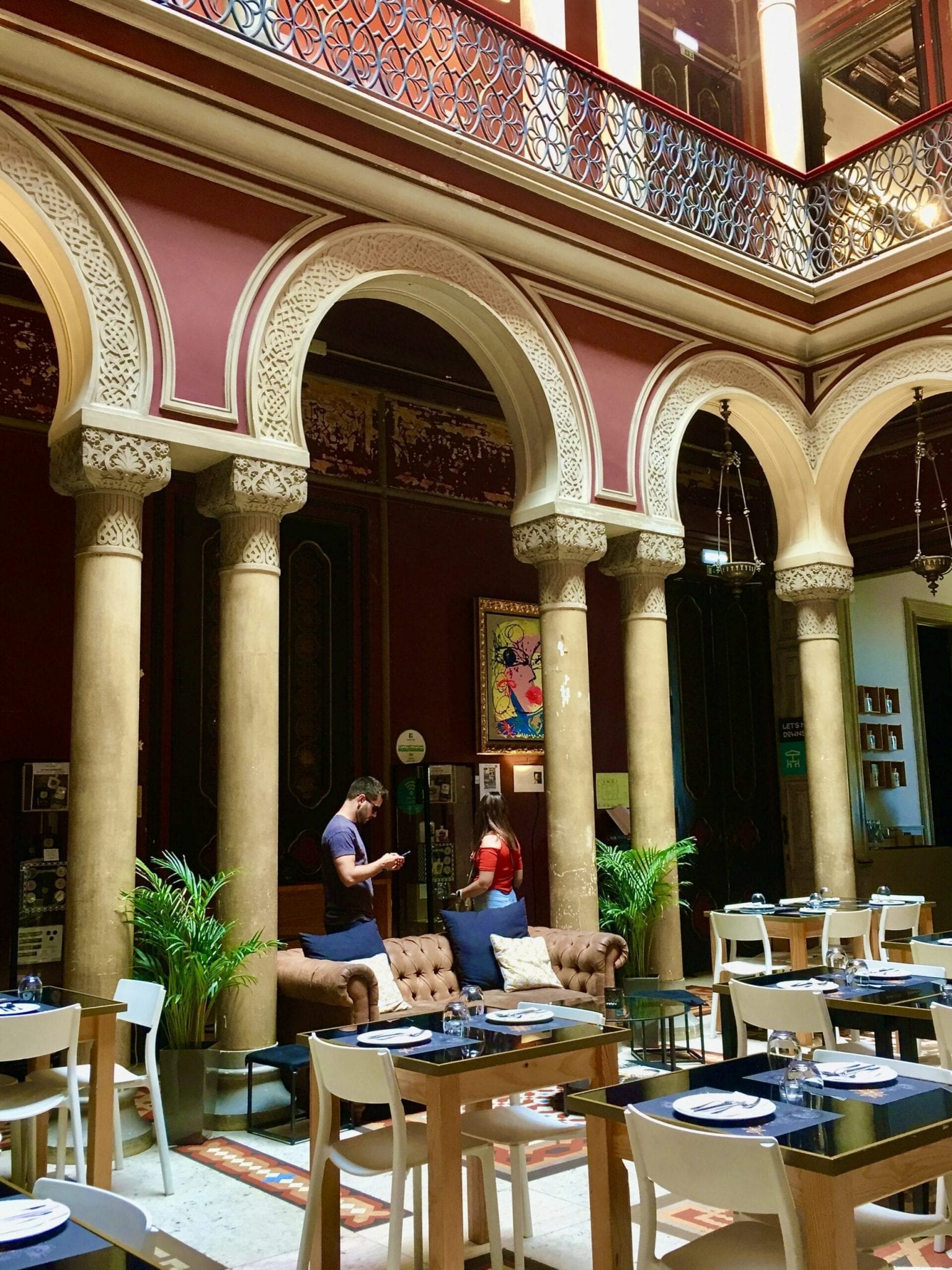
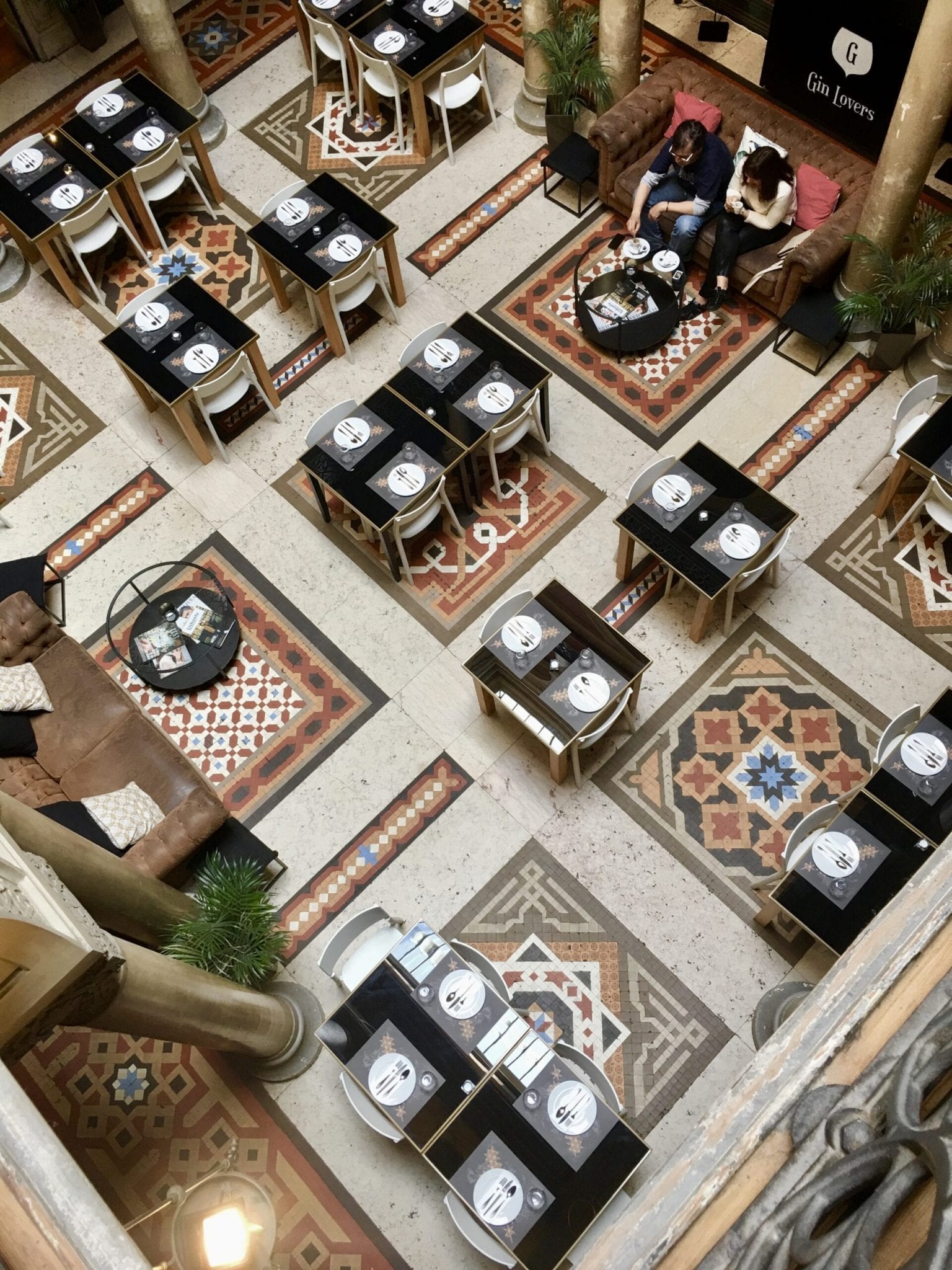
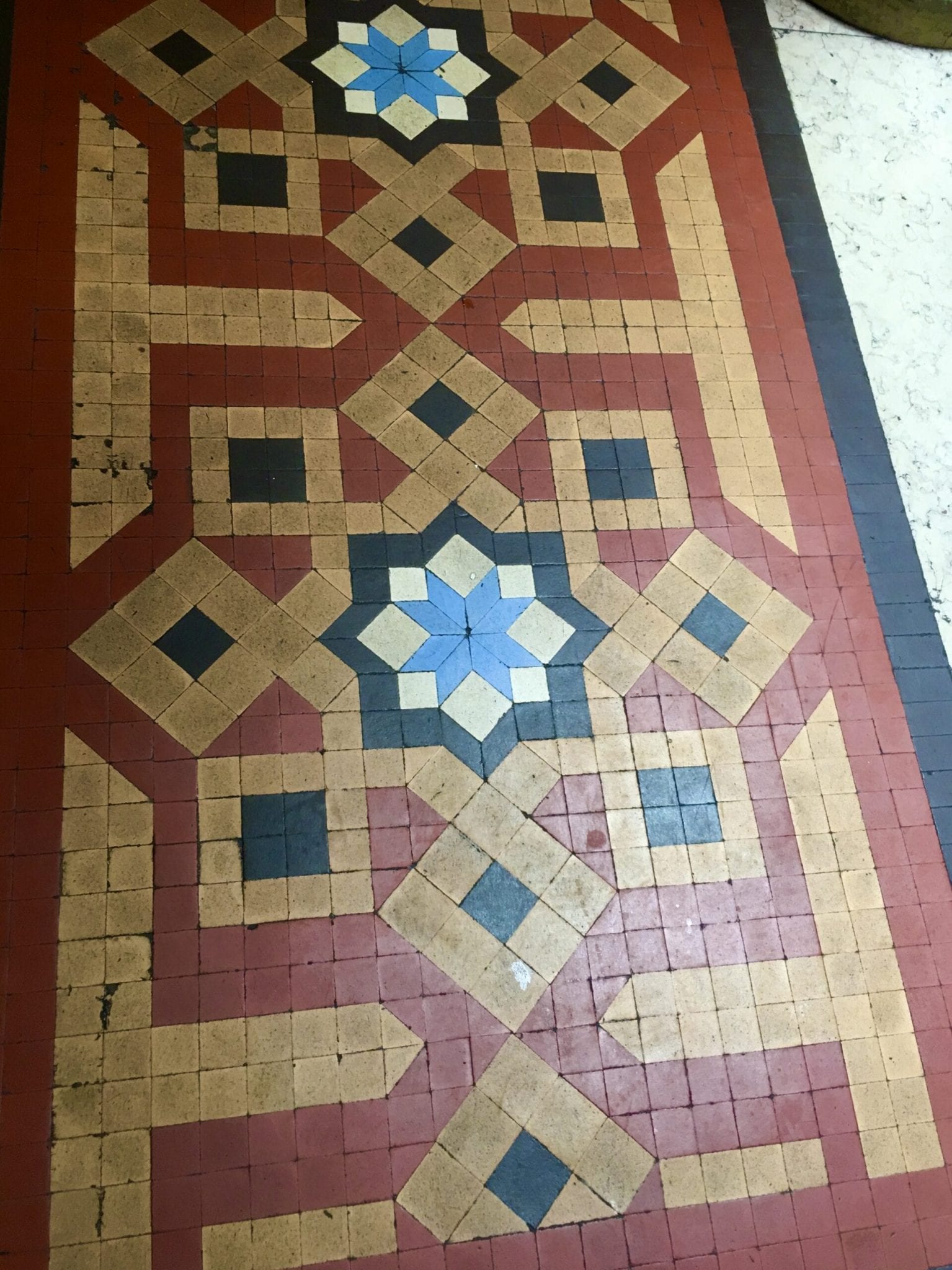
The restaurant, the Casa do Alentejo, is to the right of the entrance, and looking at the design and tile work it could have easily been at home in a riad in Morocco, with its perfectly proportioned arches covered in neo-Arab tiles. The floor was a design of geometric tiles and the tables had been placed carefully inside the squares in a repetitive design. I was there shortly before the restaurant opened for lunch and the tables had been laid for the anticipated lunch trade, with cutlery arranged as meticulously as the table arrangement on the tiles. All told, it was a magnificent room and the tables appeared dwarfed by the high ceilings. Looking at the menu, I saw that the restaurant serves regional dishes from the Alentejo region of Portugal, accompanied by regional wines — hence the name.
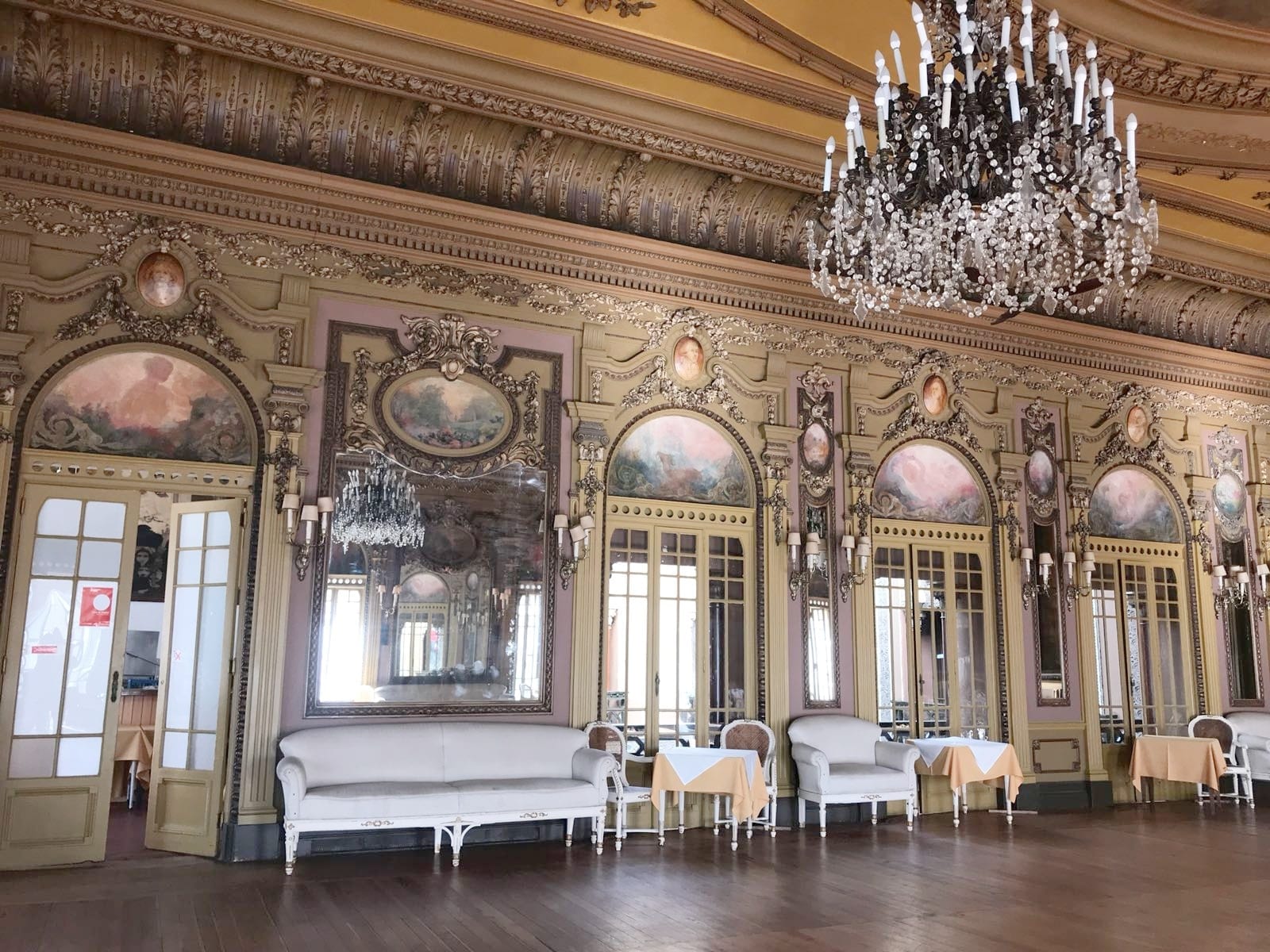
Off to the side of the restaurant was the dance hall — and suddenly we were back in Europe looking at pastel-colored walls, crystal chandeliers, period furniture, and huge embellished mirrors. This is used for receptions and is open for dancing once a week on a Sunday. It is a very gracious and elegant room that would fit well into a European palace.
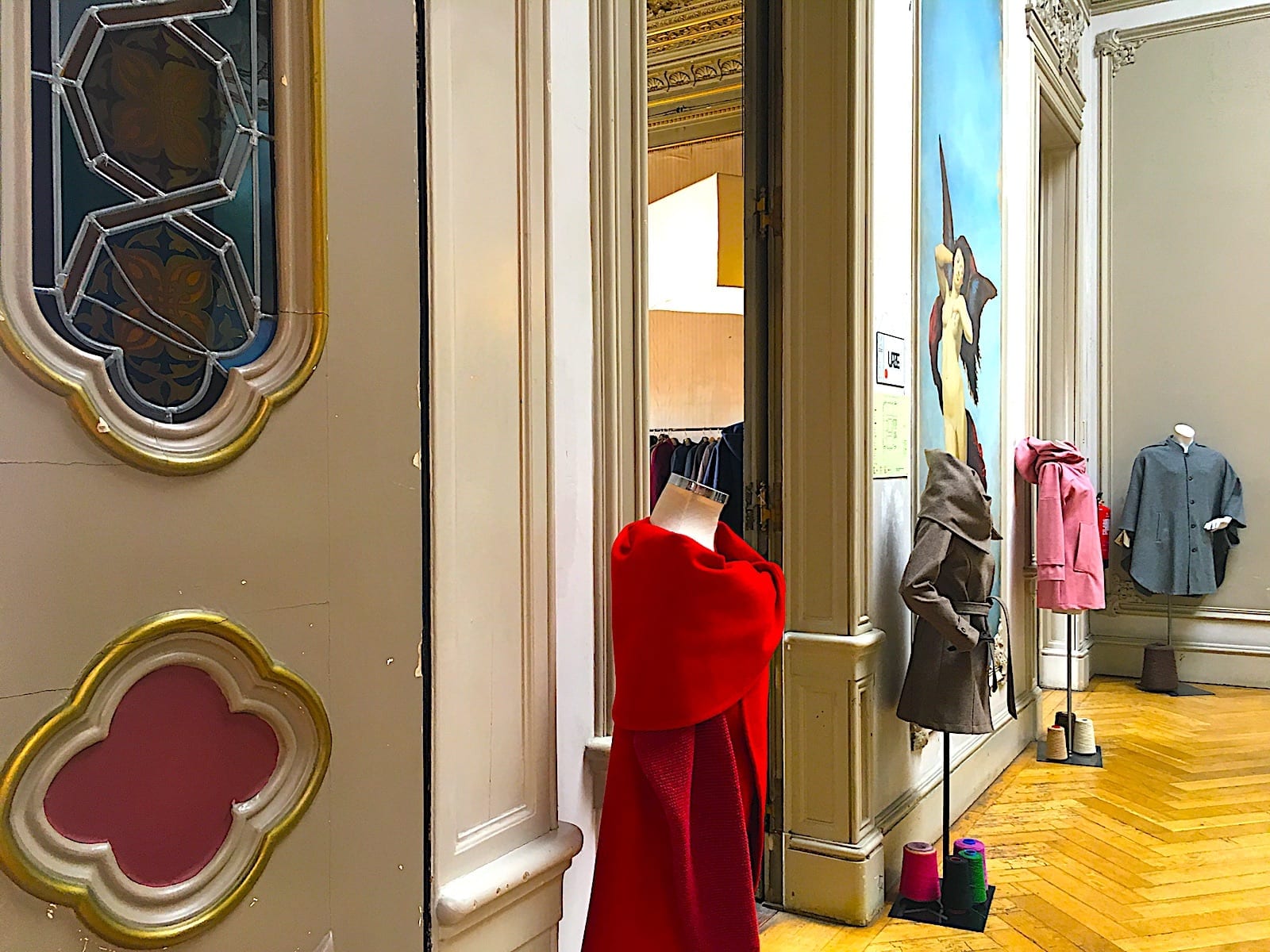
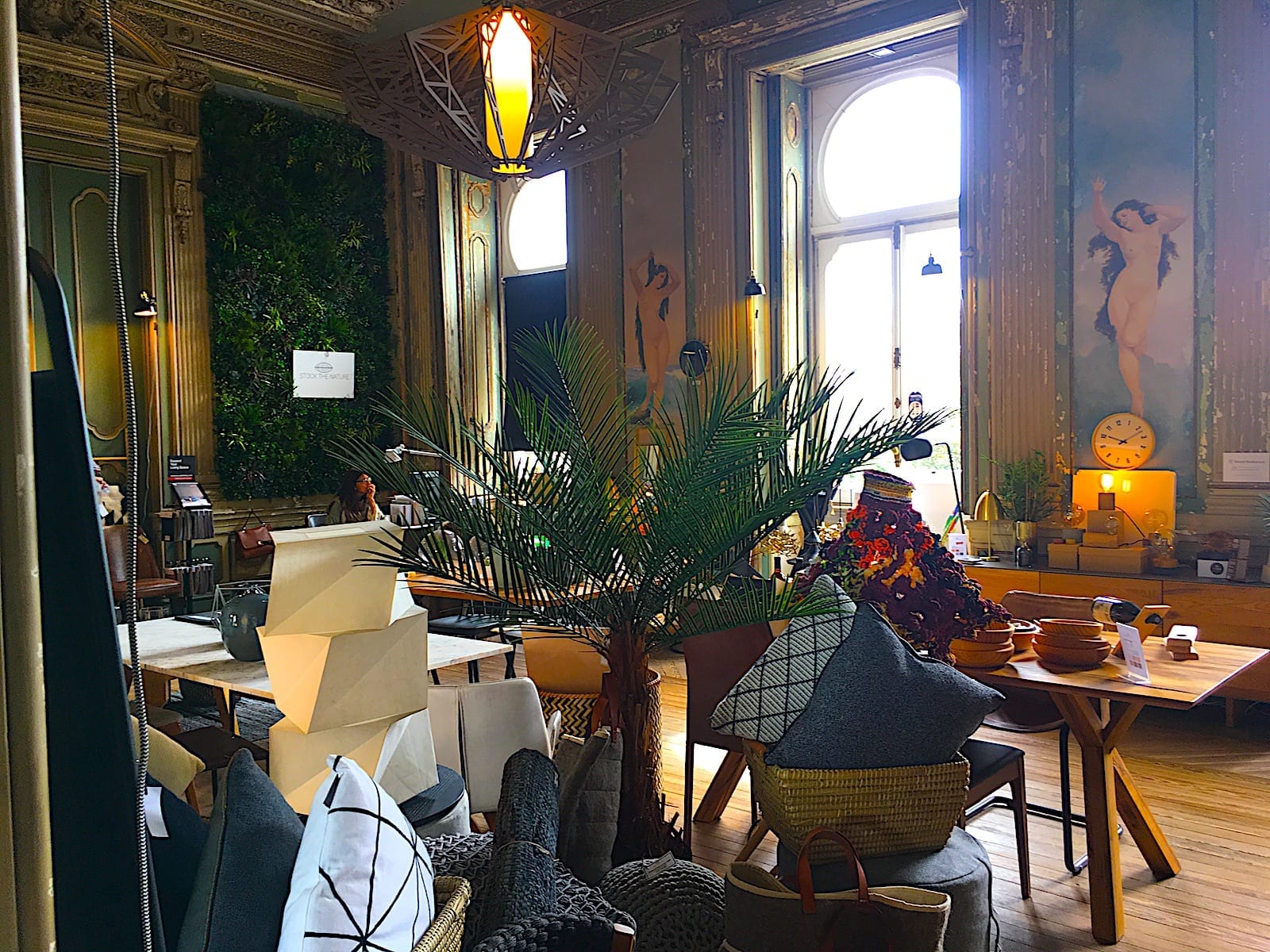
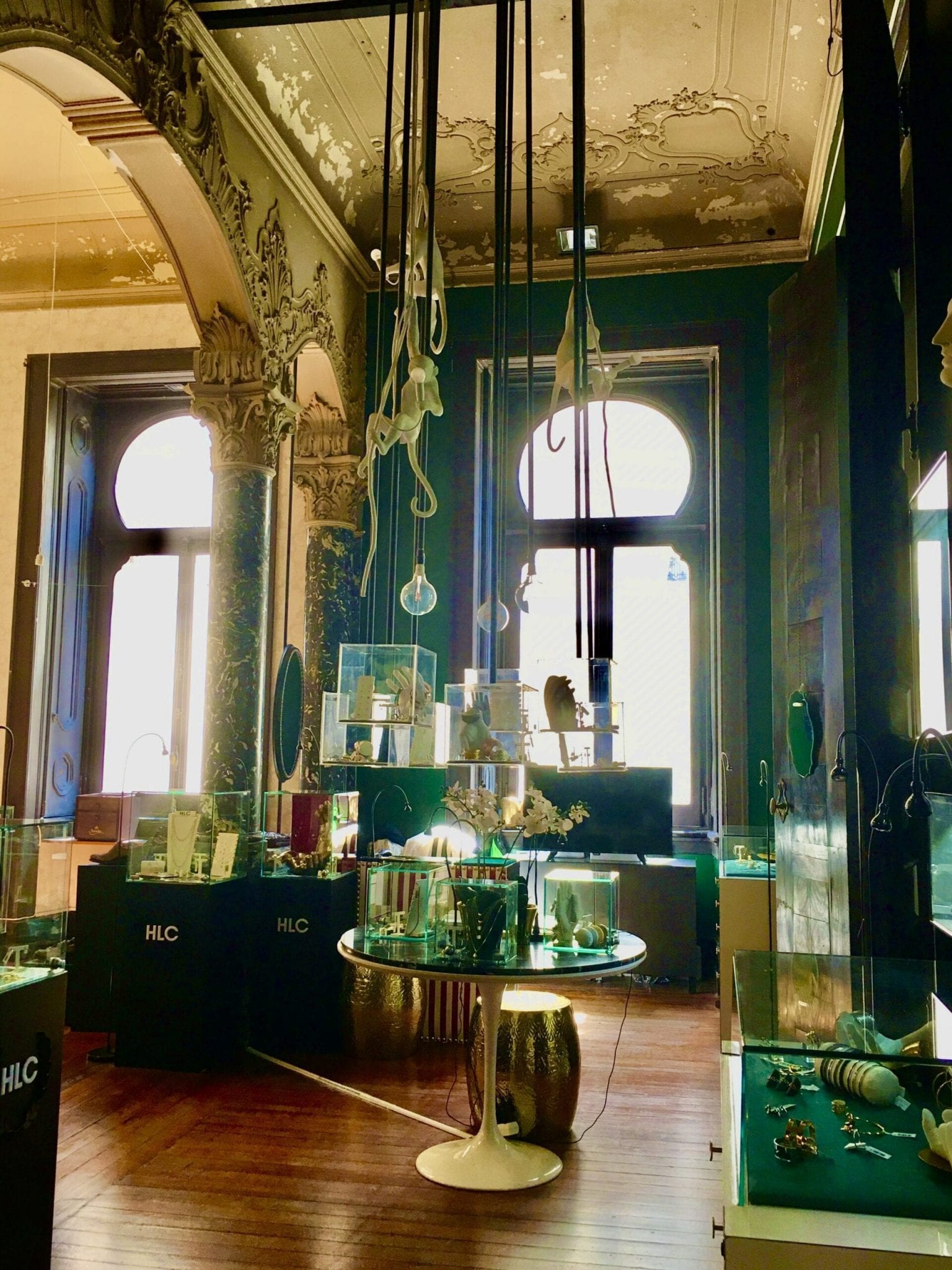
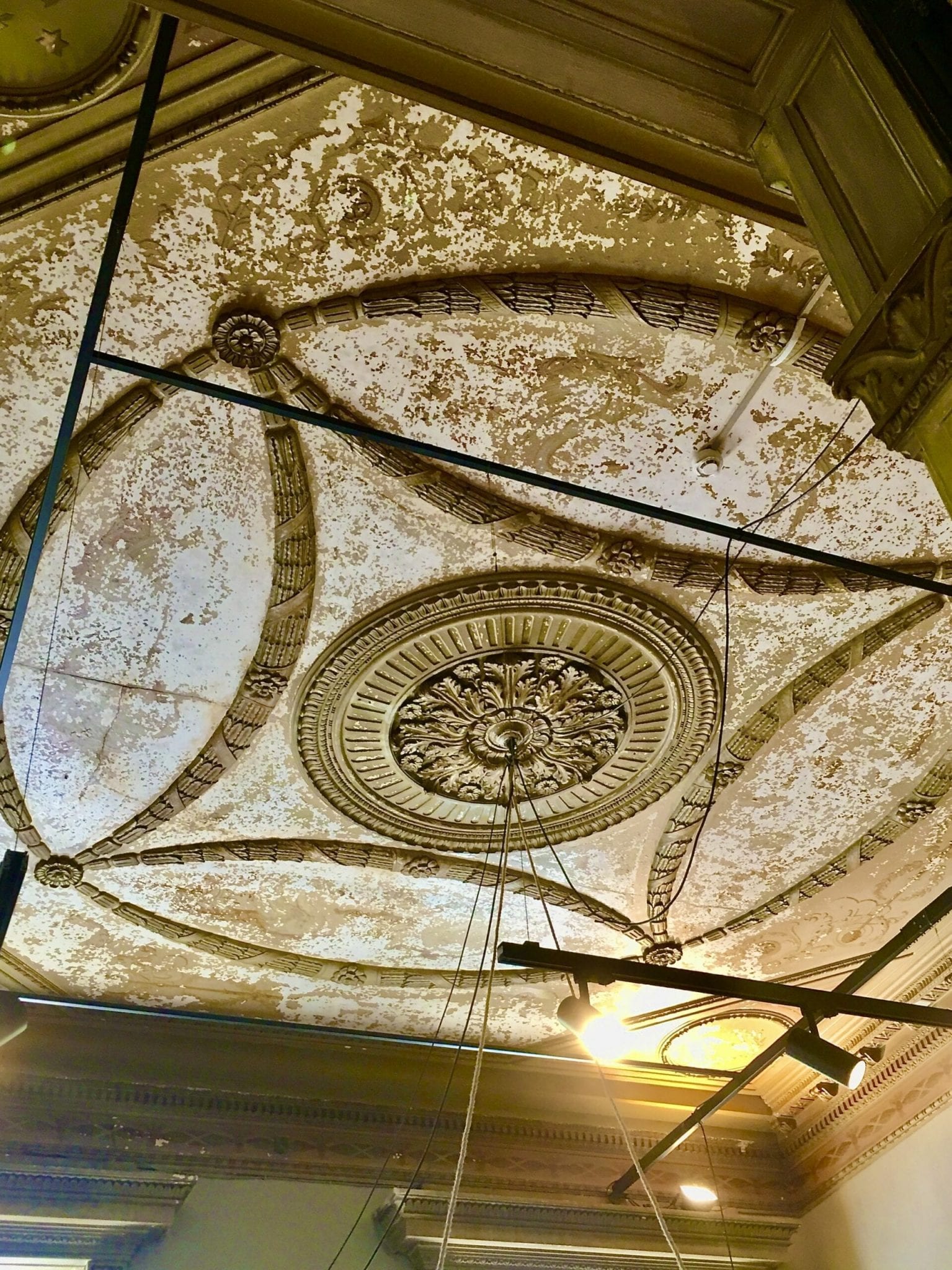
This was quite a combination: a Moorish Palace with European overtones turned into a mini shopping center, a juxtaposition of diverse cultures and styles in a single area — and it all worked! Kudos to the architect who conceived of this folly in 1917, Antoni Rodrigues da Silva Junior, because everything was carefully thought out and exquisitely executed. The original architect’s design has stood the test of time allowing it to be re-invented over again without diminishing.
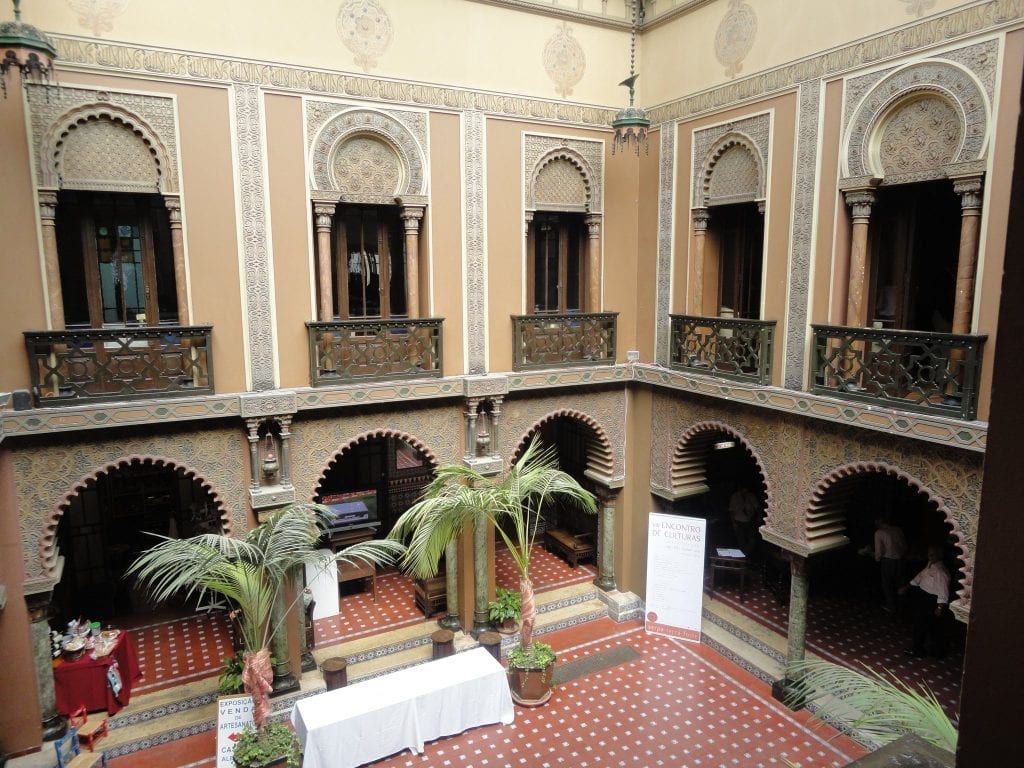
After walking through the building, I paused for a cup of coffee at the caf;e inside the palace and thought about what I had just experienced. It was amazing: a marriage of Moroccan and European Old World style, with modern shops. A combination that should not work, but in the Palacio Alverca, now known as the Embaixada, it does.
Palacio Alverca / Embaixada
Rua Portas de Santo Antao, 58
1150-268 Lisbon
Telephone: 351/213 469 231
Building hours: 11AM – 11PM
Restaurant Casa do Alentejo hours: 12-3PM and 7-11PM

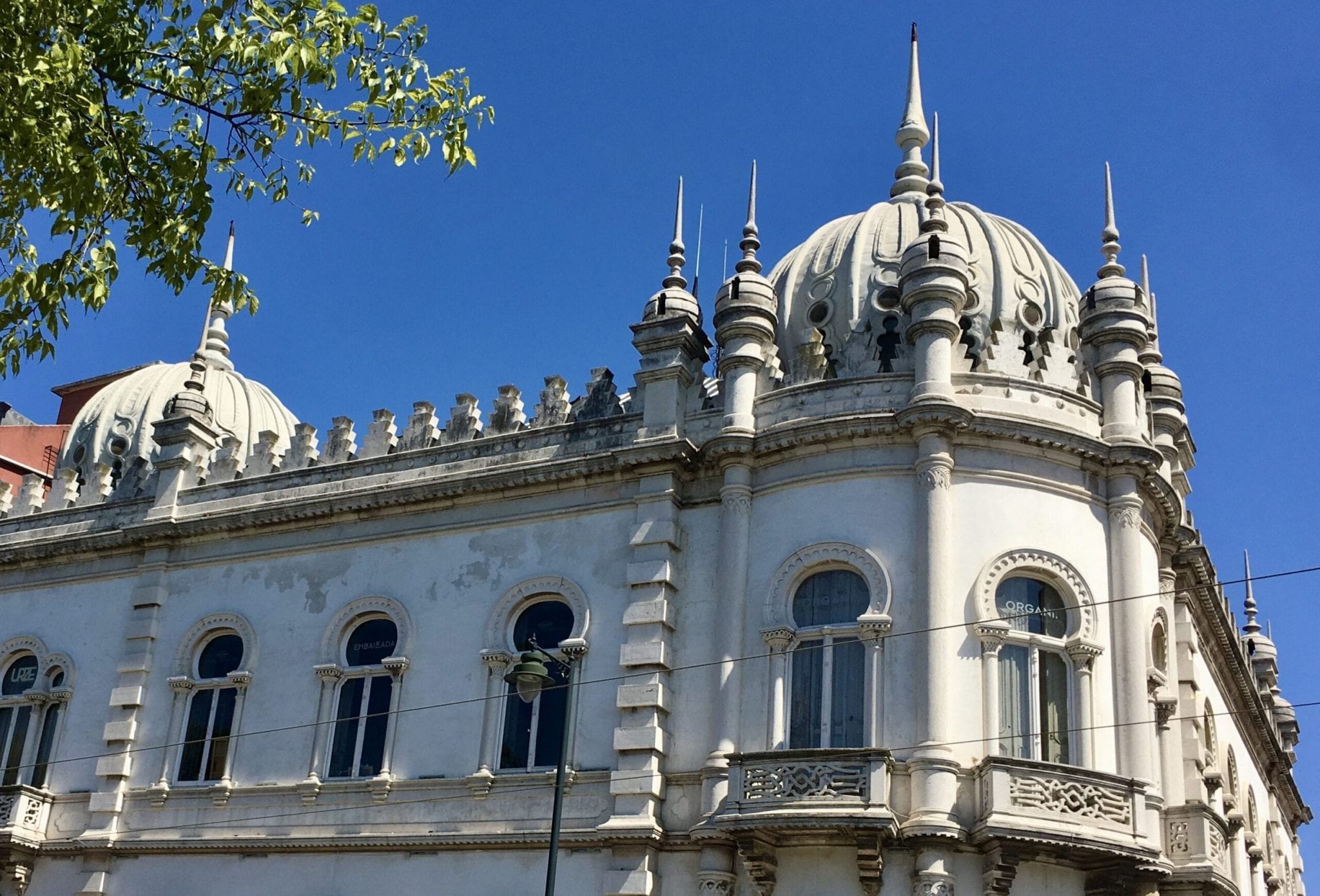
Amazing! We missed this one and will have to go back!
Can I go with you?
Phyl.
This my ideal of shopping and dining!!!!!
Makes you want to scream when thinking of the Westfield Shopping malls………
We can meet at the restaurant for some real food – not fast food. See you there!
Phyl.
As always, I enjoyed your tale and interesting destinations. Then, as now, so much of human effort is motivated by a desire to impress our peers. Here is an article about a similar effort to combine architectural designs to unusual effect: https://www.johnbechtelwriter.com/argentina/buenos-aires/the-palacio-barolo-an-instructive-tour-of-hell-purgatory-and-heaven-in-one-buenos-aires-afternoon/#more-922.
John,
I remember when you wrote that wonderful article and wish you had written more about your stay in
Buenos Aires.There are not many people who can match your writing talents.
Phyl.